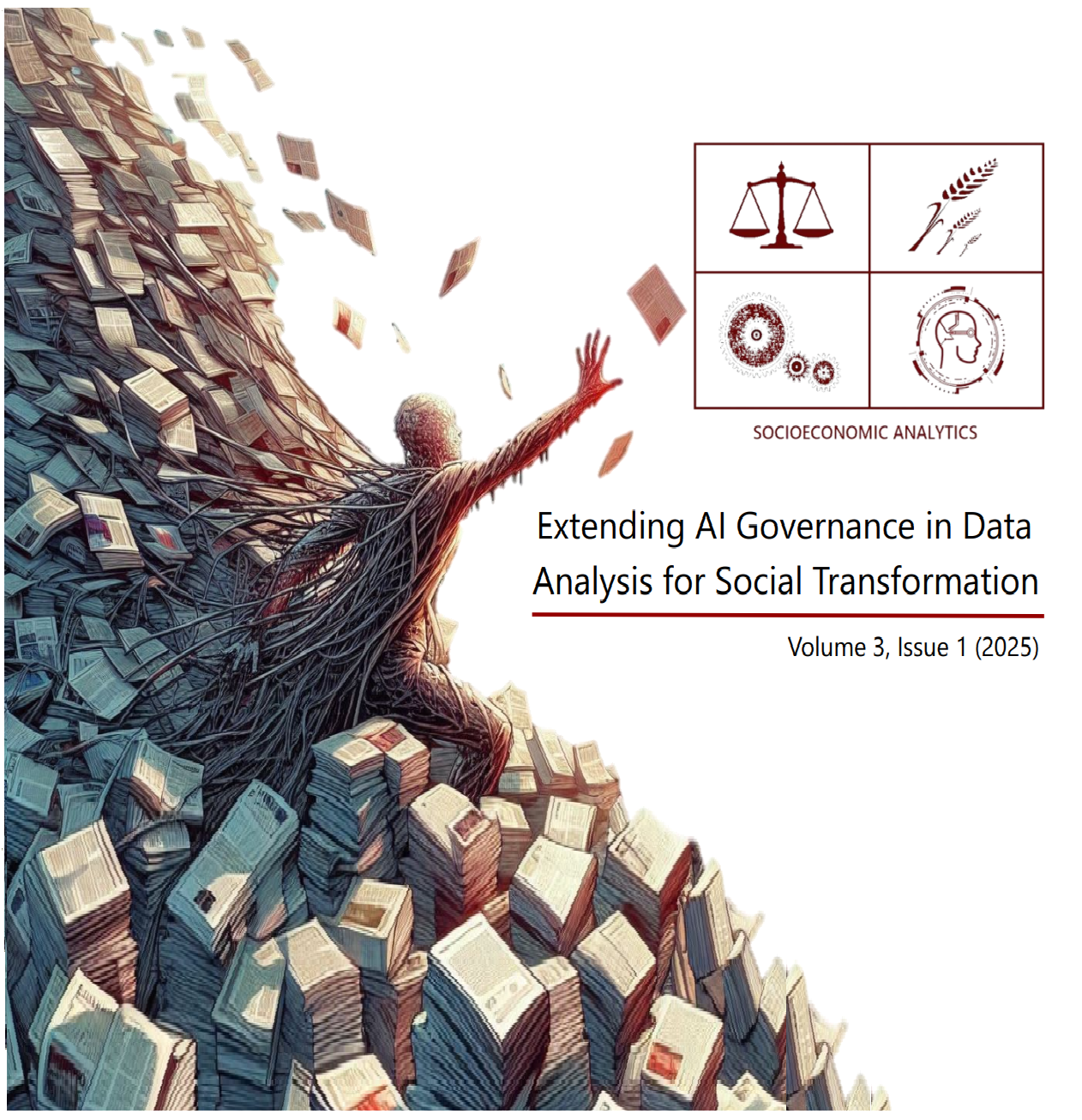Impact of adoption of new rice technologies: A solution for food security in Senegal
DOI:
https://doi.org/10.29327/2565368.3.1-7Keywords:
Agriculture, Regression Analysis, Probit, New rice technologies, Food security, Intervention Analysis, SenegalAbstract
The objective of this article is to assess the impact of the adoption of new rice technologies on food security in Senegal. To achieve this objective, data from the Agricultural Policy Support Project (PAPA) for irrigated rice and the Directorate of Agricultural Analysis, Forecasting and Statistics (DAPSA) for upland rice in 2017 are used. The adoption of rice technologies is broken down into three levels of treatments, namely T1 (fertilizer), T2 (fertilizers and improved seeds), and T3 (fertilizers, improved seeds, and motorized equipment). Using the localized mean response (LARF) function of the instrumental variable (access), the results show that the adoption of T2 treatment has a positive and significant impact of 2.363 kg on the monthly rice consumption of farm households. However, T1 and T3 treatments have a negative impact on household rice consumption of 17.528 kg and 16.74 kg respectively.
References
ANSD, RGPH-5. (2023). Interim Report: Chapter X: Agriculture. 5th General Population and Housing Census.
Abadie, A. (2001). Implementation of matching estimators for average treatment effects in Stata. Stata Journal, 1(1), 1-18.
Abadie, A. (2003). Semiparametric estimation of instrumental variables of treatment response models. Journal of Econometrics, 113(2), 231-263.
Africa Rice Center (AfricaRice) (2010). Participatory varietal seed. Available at https://www.yumpu.com/en/document/view/24573725/participatory-varietal-selection-of-rice-the-technicians-manual. Last accessed on 30.08.2025.
Alene, A.D. and Manyong V.M., (2006). Farmer-to-farmer technology diffusion and yield variation among adopters: the case of improved cowpea in northern Nigeria. Agricultural Economics 35:203-11.
Amare, M., Asfaw, S., & Shiferaw, B. (2012). Welfare impacts of intensification of pigeon maize and pea cultivation in Tanzania. Agricultural Economics. 43. 27 - 43.
Ambagna, J. J., & Niee Foning, M. (2014). Productivity of agricultural production factors and food availability in Cameroon. In Colloquium: 8th Social Science Research Days (p. 18).
Arouna, A., and Diagne, A. (2013). Impact of rice seed production on the yield and income of agricultural households: a case study from Benin (No. 309-2016-5297).
Awotide, B., Diagne, A. and Omonona, B. (2012). Impact of Improving Agricultural Technology Adoption on Sustainable Rice Productivity and Rural Farmer Well-Being in Nigeria: A Local (Late) Medium Treatment Effect Technique. African Economic Conference. Kigali, Rwanda.
Bandiera, O. and Rasul, I. (2006). Social media and technology adoption in northern Mozambique. The Economic Review, 116 (514), 869-902.
Bakehe, N. (2018). Agricultural productivity and deforestation in the Congo Basin. Rural Economy , 366, 5-19.
Conley, T. G., & Udry, C. R. (2010). Discovering a new technology: pineapple in Ghana. American Economic Review, 100(1), 35-69.
Diagne, A. (2006). Dissemination and adoption of NERICA rice varieties in Côte d'Ivoire. Developing Economies, 44(2), 208-231.
Diagne, A. and Demont, M. (2007). Taking a New Look at Empirical Models of Adoption: Estimating the Average Treatment Effect of Adoption Rates and Their Determinants. Agricultural Economics, 37(2-3), 201-210.
Diagne, A., Dontsop-Nguezet, P. M., Kinkingninhoun-Medgabé, F. M., Alia, D., Adegbola, P. Y., Coulibaly, M., ... and Wiredu, A. N. (2012). The impact of the adoption of NERICA rice varieties in West Africa. In the SPIA Pre-Conference Workshop (Vol. 28).
Duflo, E., Kremer, M., & Robinson, J. (2011). Encouraging farmers to use fertilizers: theory and experimental evidence in Kenya. American Economic Review, 101(6), 2350-90.
FAO (2014), "Crop Prospects and Food Situation", Global System. Available at https://openknowledge.fao.org/server/api/core/bitstreams/8aff29ee-f8e4-4afd-89c4-18f96a4c0f79/content. Last Accessed on 30.08.2025
FAO. (2001). The State of Food and Agriculture. Available at https://openknowledge.fao.org/server/api/core/bitstreams/8aff29ee-f8e4-4afd-89c4-18f96a4c0f79/content. Last Accessed on 30.08.2025
FaoStat (2013). FAO Statistical Yearbooks. Available at https://www.fao.org/4/i3107e/i3107e.pdf. Last Accessed on 30.08.2025
Gaymard, H. (2009). Agriculture at the heart of Africa's future. Politique étrangère, 265276.
Hailu, B. K., Abrha, B. K., & Weldegiorgis, K. A. (2014). Adoption and Impact of Agricultural Technologies on Agricultural Income: Data from Southern and Northern Tigray Ethiopia, International Journal of Food and Agricultural Economics (IJFAEC), 2(11282016-92058), 91-106.
Heckman, J. J., & Vytlacil, E. (2005). Structural equations, effects of treatments and evaluation of econometric policies 1. Econometrica, 73(3), 669-738.
Higgins et al., (2014). Global Analysis of Vulnerability, Food Security and Nutrition (AGVSAN). Republic of Djibouti.
Manzelli, M., Fiorillo, E., Bacci, M., & Tarchiani, V. (2015). Rice cultivation in the plains of southern Senegal (Moyenne-Casamance): défis et perspectives pour la sustainability des actions de réhabilitation et de développement, Cahiers Agricultures, 24(5), 301-312.
Mendez Del Villar, P. Dia, D. 2019: TETIS/CIRAD mission report, mountain rice in Casamance and groundnut basin.
Mendola, M. (2007). Agricultural Technology Adoption and Poverty Reduction: A Propensity Score Matching Analysis for Rural Bangladesh. Food Policy, 32(3), 372-393.
Mulugeta, T. and Hundie, B. (2012). " Impacts of the Adoption of Improved Wheat Technologies on Household Food Consumption in Southeastern Ethiopia ," 2012 Conference, 18-24 August 2012 , Foz do Iguaçu, Brazil126766, International Association of Agricultural Economists.
Niang et al., (2017). Study of the consumption of staple cereals in Senegal. USAID, Agricultural and Rural Foresight Initiative.
Omilola, B. (2009). Estimating the Impact of Agricultural Technology on Poverty Reduction in Rural Nigeria (Vol. 901). International Food Policy Res Inst.
Rosenbaum, P. R. and Rubin, D. B. (1983). The central role of the propensity score in observational studies for causal effects. Biometrika, 70(1), 41-55.
Rubin, D.B. (1974). Estimating the causal effects of treatments in randomized and non-randomized studies. Journal of Educational Psychology, 66 (5), 688.
Sarr, N.S.D., Basse B.W. and Fall, A.A. (2018) "Rates and Determinants of Adoption of Improved Rice Varieties in Senegal," Rural Economy, 365 | 2018, 51-68.
Saliga, F. and Alinsato, A. (2021). Analysis of the food security of agricultural households in the Borgou department of the Republic of Benin. Economic Benchmarks and Outlook, 5(1).
Schneider, K. and Gugerty, M. K. (2011). Agricultural Productivity and Poverty Reduction: Linkages and Pathways. Journal d'essai des bibliothèques, 1(1), 56-74.
Suri, T. (2011). Selection and comparative advantage in technology adoption. Econometrica, 79(1), 159-209.
Tesfaye, S. Bedada, B, and Yami Gurmu, Mesay. (2016). Impact of Improved Adoption of Wheat Technology on Productivity and Incomes in Ethiopia. African Journal of Cultural Sciences. 24. Episode 24
Vall, E., Marre-Cast, L., & Kamgang, H. J. (2017). Intensification trajectories and sustainability of mixed crop-livestock farms in sub-Saharan Africa: contribution of the agriculture-livestock association. Cahiers agricultures, 26(2), 12-p.
Downloads
Additional Files
Published
Issue
Section
License
Copyright (c) 2025 Albertine Bayompe Kabou, Babacar Ndiaye

This work is licensed under a Creative Commons Attribution-NonCommercial-NoDerivatives 4.0 International License.
Authors who publish with Socioeconomic Analytics retain the copyright of their work and agree to license it under a Creative Commons Attribution-NonCommercial-NoDerivatives 4.0 International (CC BY-NC-ND 4.0) license. This means that the work can be shared, copied, and redistributed in any medium or format, as long as it is not used for commercial purposes, and the original work is properly cited. The work cannot be changed in any way or used to create derivative works.










